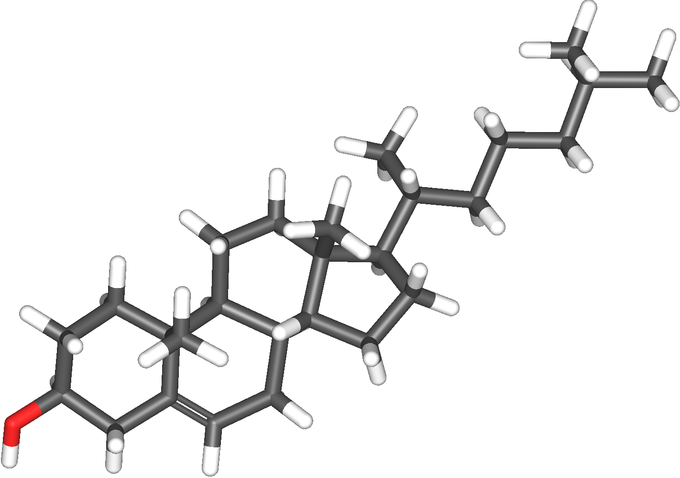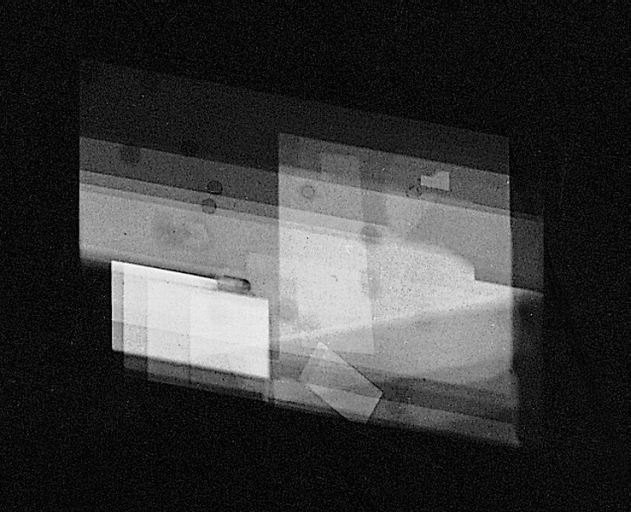23.8A: Cholesterol Metabolism
- Page ID
- 8119
One quarter of body cholesterol is produced by the liver, and 50% of this is reabsorbed back into the circulation via the small intestine.
- Describe cholesterol metabolism
Key Points
- Cholesterol is also synthesized in the adrenal glands and reproductive organs.
- Cholesterol is kept in balance by homeostatic mechanisms: higher dietary intake leads to reduced synthesis in the body.
- Dietary cholesterol is poorly absorbed; therefore, intake of cholesterol has little effect on blood cholesterol levels.
- Cholesterol forms part of the bile acids excreted from the liver.
- Crystallized cholesterol is the primary component of gallstones.
- Cholesterol in the colon is metabolized by colonic bacteria which convert it to a nonabsorbable sterol that is excreted in the feces.
Key Terms
- gallbladder: In vertebrates, a small organ that aids mainly in fat digestion and concentrates bile produced by the liver.
- cholesterol: A sterol lipid synthesized by the liver and transported in the bloodstream to the membranes of all animal cells; it plays a central role in many biochemical processes and, as a lipoprotein that coats the walls of blood vessels, is associated with cardiovascular disease.
- bile: A bitter brownish-yellow or greenish-yellow secretion produced by the liver, stored in the gall bladder, and discharged into the duodenum, where it aids the process of digestion.
EXAMPLES
Eggs are an excellent, low-calorie source of protein, but they also are fairly high in cholesterol, so, in the past, it was thought that eggs should be limited in the diet. However, as we now know that cholesterol is kept in balance in the body, and that food intake has little effect on blood cholesterol concentrations, it appears that eggs can be a healthy part of one’s diet.
About 20–25% of total daily cholesterol production occurs in the liver. Other sites of higher synthesis rates include the intestines, adrenal glands, and reproductive organs. Biosynthesis of cholesterol is directly regulated by the cholesterol levels present, although the homeostatic mechanisms involved are only partly understood. A higher intake from food leads to a net decrease in endogenous production, whereas lower intake from food has the opposite effect. However, most ingested cholesterol is esterified; esterified cholesterol is poorly absorbed. The body also compensates for any absorption of additional cholesterol by reducing cholesterol synthesis. For these reasons, cholesterol intake in food has little, if any, effect on total body cholesterol content or concentrations of cholesterol in the blood.

Cholesterol: A molecule of cholesterol consisting of four linked hydrocarbon rings forming the bulky steroid structure. There is a hydrocarbon tail linked to one end of the steroid and a hydroxyl group linked to the other end.
Cholesterol is recycled. The liver excretes it in a non-esterified form (via bile) into the digestive tract. Typically about 50% of the excreted cholesterol is reabsorbed by the small bowel back into the bloodstream.

Cholesterol Crystals: Microscopic appearance of cholesterol crystals in water. Photo taken under polarized light.
Cholesterol is oxidized by the liver into a variety of bile acids. These, in turn, are conjugated with glycine, taurine, glucuronic acid, or sulfate. A mixture of conjugated and nonconjugated bile acids, along with cholesterol itself, is excreted from the liver into the bile. Approximately 95% of the bile acids are reabsorbed from the intestines, and the remainder is lost in the feces. The excretion and reabsorption of bile acids forms the basis of the enterohepatic circulation, which is essential for the digestion and absorption of dietary fats. Under certain circumstances, when more concentrated, as in the gallbladder, cholesterol crystallizes and is the major constituent of most gallstones. Lecithin and bilirubin gallstones also occur, but less frequently. Every day, up to one gram of cholesterol enters the colon. This cholesterol originates from the diet, bile, and desquamated intestinal cells; it can be metabolized by the colonic bacteria. Cholesterol is converted mainly into coprostanol, a nonabsorbable sterol that is excreted in the feces. A cholesterol-reducing bacterium origin has been isolated from human feces.

